On Saturday, I was asked to lead an hour and fifteen minutes of worship at a retreat/meeting day for the Readers in our Diocese. The ideas I used were supposed to engage the adults present on the day while also inspiring them with things they could take home and use with children in their churches. So they had to be TRULY All-Age!
I led about half an hour of worship at the beginning – the slides for this can be downloaded by clicking here: Readers Retreat Day. For the story, I used Bibliologue, which I’ve written about on this blog before. The song I used is a Hebrew melody, using language from Isaiah as a prayer for reconciliation – appropriate to the story of the Prodigal Son. If you don’t know it, you can hear a tinny recording of me singing it in my office here. The two parts can be sung together, as well – I had the congregation try this. The Lego prayers referred to in the slides can be found here.
Then we had about half an hour to explore prayer stations, which I’ve detailed below. During this time, I played my YouTube Lent playlist, to create a contemplative atmosphere.
In putting together the prayer stations, I was loosely guided by three things:
- The different parts of the story. Some had quotes on them from the story to show a focus on that particular element. Some were more general.
- The four spiritual styles detailed by Dave Csinos in his book “Children’s Ministry That Fits,” and based on work by several others: Word, Emotion, Symbol, Action.
- A model from a colleague who told me her prayer life operates in three ways – inward (ourselves), outward (others), and upward (God). (She may have got this from someone else – if so, please let me know!)
At the end, I gathered the group back together and talked about how the Prodigal Son is an apt parable for Lent – it shows a time of alienation, ending in reconciliation. Just like the son and father are reconciled at the end, we are reconciled with God at Easter. I read the following from an essay by Debie Thomas on the “Journey With Jesus” blog:
“How exactly did Jesus spend his time? Was he tempted 24/7? Did he walk for miles each day, or camp out in one spot? Where did he sleep? What was the silence like, hour after hour after hour? Did he break it up by humming, laughing, or shouting? Did he star gaze? Play with birds? Chase lizards? As the days stretched on and on, did he fear for his life? Question his sanity? Wish to die? Mark — given, as ever, to brevity — leaves all of these questions unanswered. But the few details he does include in his account are telling, and they give us much to cling to as we face deserts in our own lives. I’d like to focus on three:
- Jesus didn’t choose the wilderness.
- The struggle is long.
- There are angels in the desert. “
Then I said that we are still in that desert time of Lent, but we know Jesus is with us even there, even in the desert. We closed with this wonderful video and some wondering questions.
So now, on to the prayer stations …



I focused several stations on the opening part of the story – the idea of leaving home and going to a distant land. Here, I invited people to think about those who are forced to leave home because of war, and to reflect on what they would bring if they had to leave home quickly. There were then ways to take action on refugee issues.
With children, I might not provide a “donate now” text code.
You can download the leaflet here.

Lots of people wrote prayers for countries where they had connections, or where there is violence. When I’ve done this with children, they often pray for the places their families come from, or places they have been on holiday.

This was a very popular station. The cardboard outlines of people are available from Baker Ross, and are a very flexible resource to have on hand.


This was also a very popular station … I can’t imagine why!
There is not just solemnity in the story, but also rejoicing. So I thought of the image of a party, and went with cake and balloons. Participants were asked to think of something that was going well, and write it with a Sharpie on a balloon. The balloon was left on the altar as an offering of thanksgiving, and then people served themselves cake.
I provided one cake that was Gluten/Dairy free.
 One thing I learned … make sure you have a plan for what to do with all the balloons afterwards! If you’re not able to pop them afterwards (we had lunch, then a Eucharist, so I couldn’t), bring a big bag to carry them out in! I did multiple trips to the car, and my back seat is now full of unpopped balloons …
One thing I learned … make sure you have a plan for what to do with all the balloons afterwards! If you’re not able to pop them afterwards (we had lunch, then a Eucharist, so I couldn’t), bring a big bag to carry them out in! I did multiple trips to the car, and my back seat is now full of unpopped balloons …

For people who prefer contemplative silence, we had a side chapel available, with the words of reassurance given to the older brother – “child, you are always with me, and all that is mine is yours” – and some glittery candles. These are electric candles, also available from Baker Ross, and great for staying safe with under-5s. Older groups may wish to use real candles, but still make sure an adult is on hand.
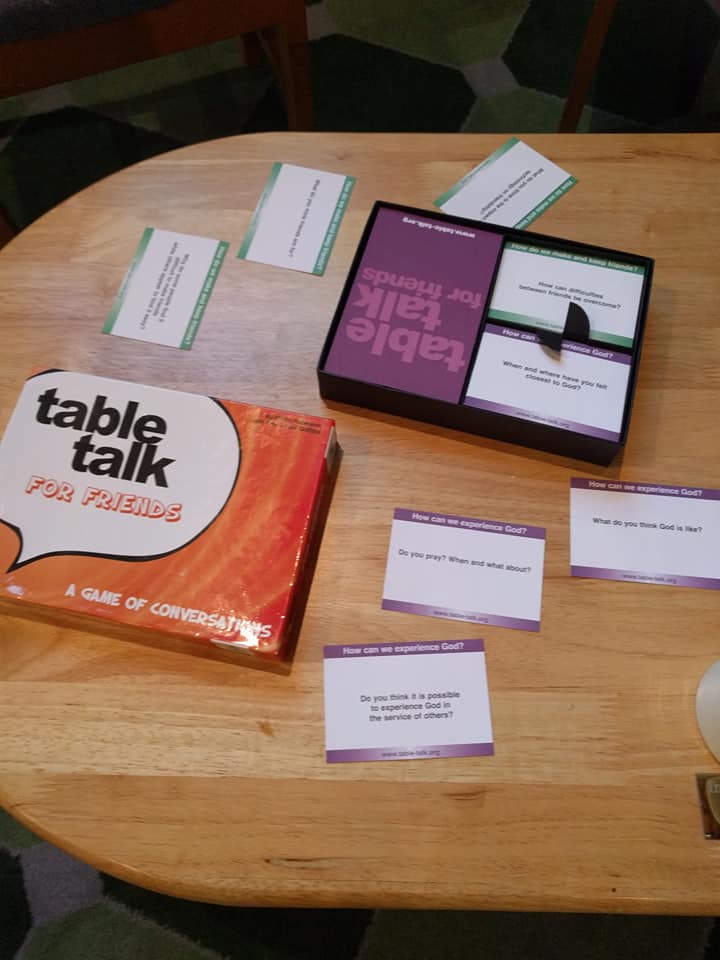
For those who pray best by talking and sharing with others, the Table Talk sets are great! These are available to borrow from Diocesan office – we also have special sets designed for use with Messy Church and for use with teens. Because this was a bought rather than custom-made resource, this prayer station wasn’t specifically about the story. But the fact that it has questions about the nature of God, and friendship/relationship, means it addresses some of the same questions the story does.

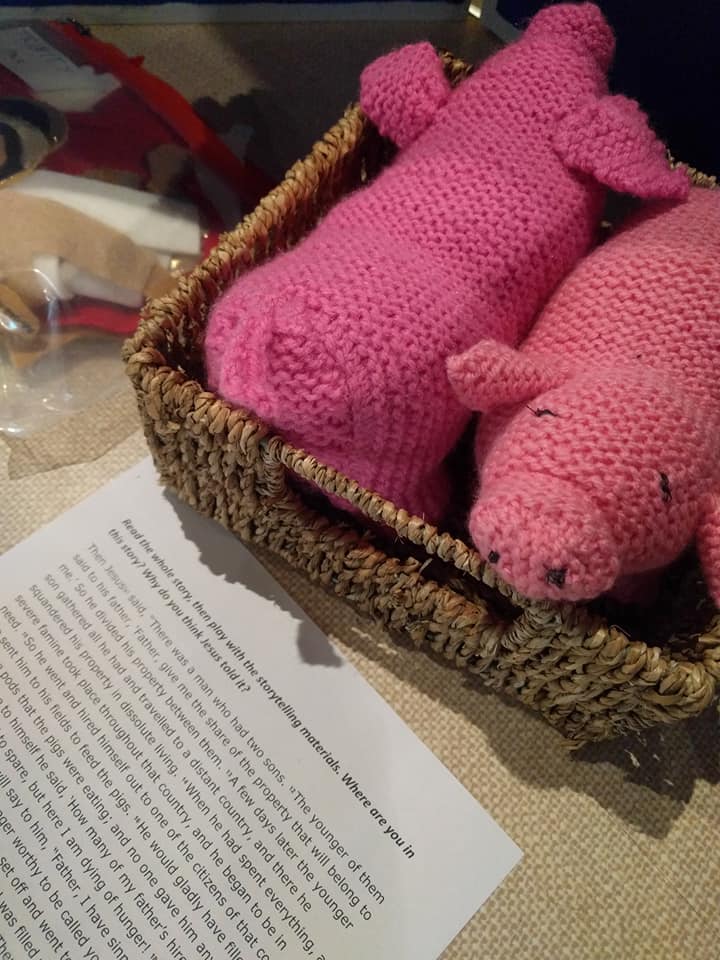
This station was about the story as a whole – and again, all these resources are available from Diocesan office. We had fuzzy felt, “The Lost” storybag with its wooden figures of the story, and the wonderful knitted pigs made for us by the Mothers’ Union. I printed out a copy of the story and encouraged people to read it and play with the materials.

And finally, there was a very general open-ended art table, with some ideas to encourage people who might feel stuck when told to “make anything.”
Many of these ideas can be adapted VERY easily for use with other stories – and could be used in Junior Church, Messy Church, All-Age Worship, and more.




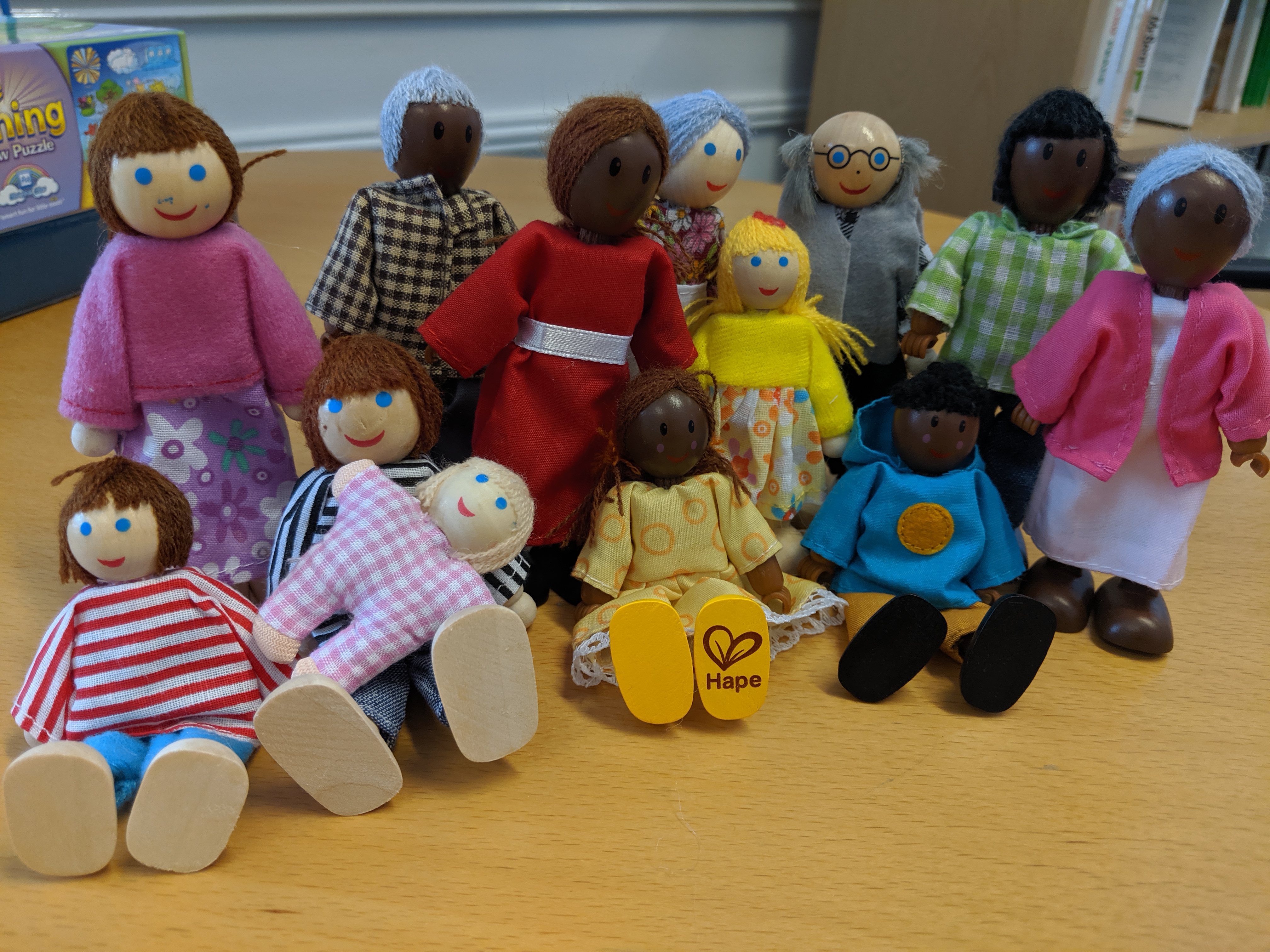
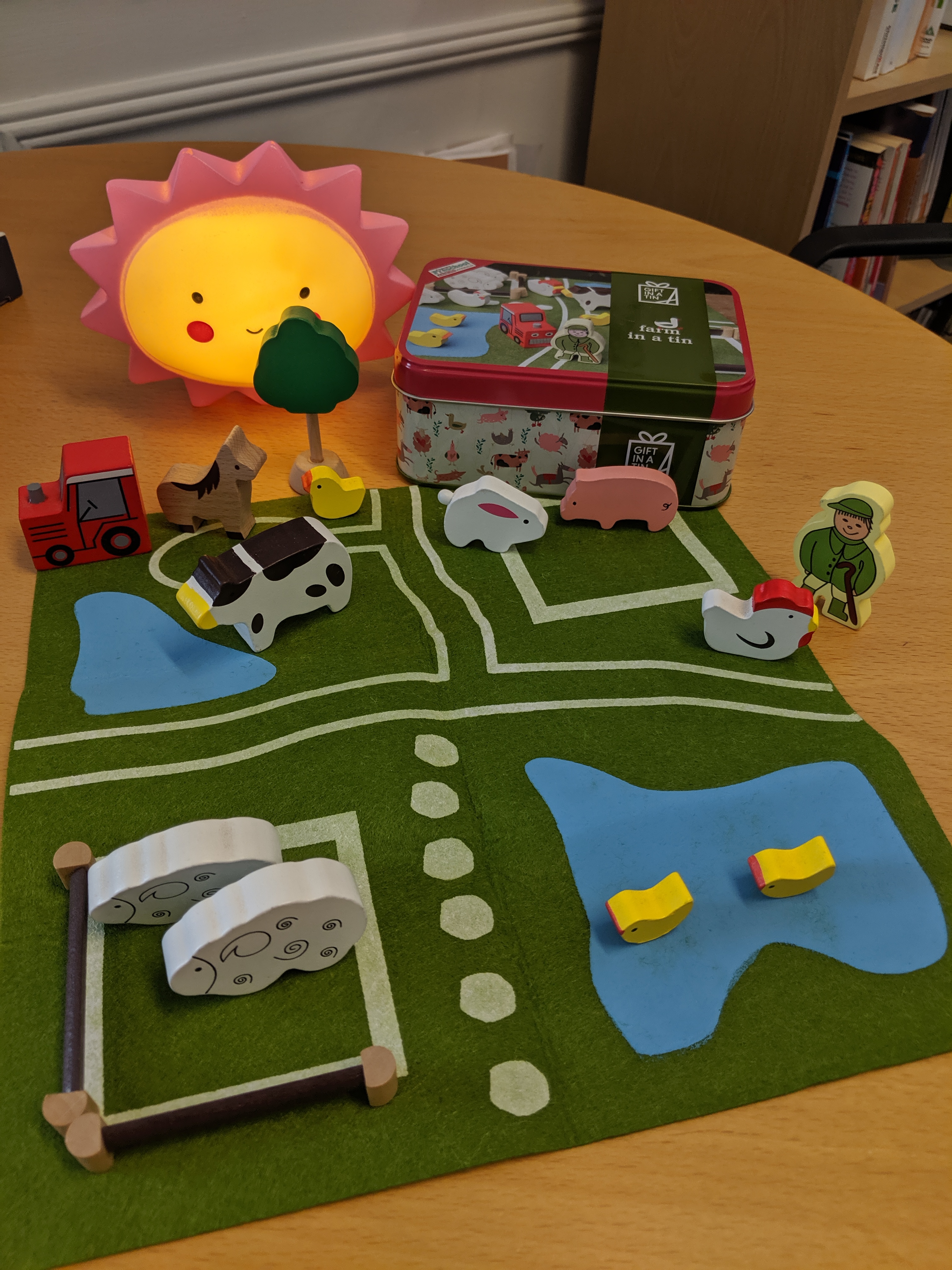



















 One thing I learned … make sure you have a plan for what to do with all the balloons afterwards! If you’re not able to pop them afterwards (we had lunch, then a Eucharist, so I couldn’t), bring a big bag to carry them out in! I did multiple trips to the car, and my back seat is now full of unpopped balloons …
One thing I learned … make sure you have a plan for what to do with all the balloons afterwards! If you’re not able to pop them afterwards (we had lunch, then a Eucharist, so I couldn’t), bring a big bag to carry them out in! I did multiple trips to the car, and my back seat is now full of unpopped balloons …










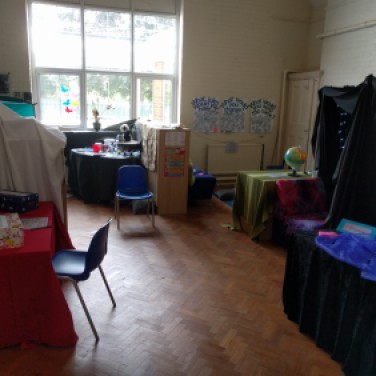




 The prayer space was scheduled to be open for two days in late July, so some activities focused on looking ahead to the next school year, and, for the Year 6 pupils, the transition to secondary school.
The prayer space was scheduled to be open for two days in late July, so some activities focused on looking ahead to the next school year, and, for the Year 6 pupils, the transition to secondary school.






